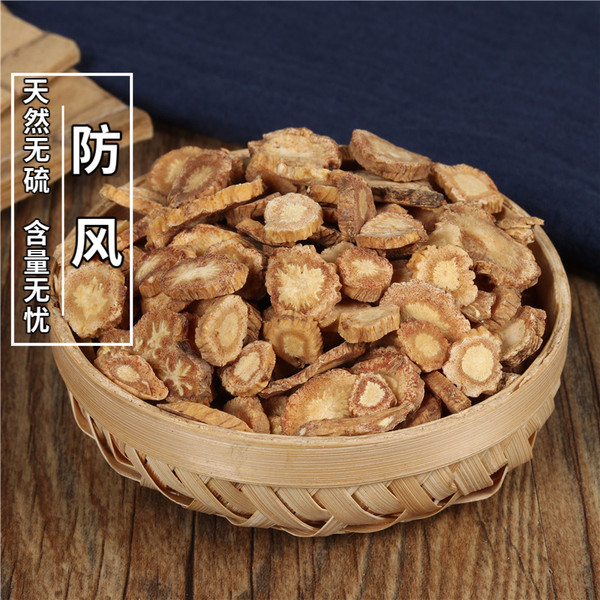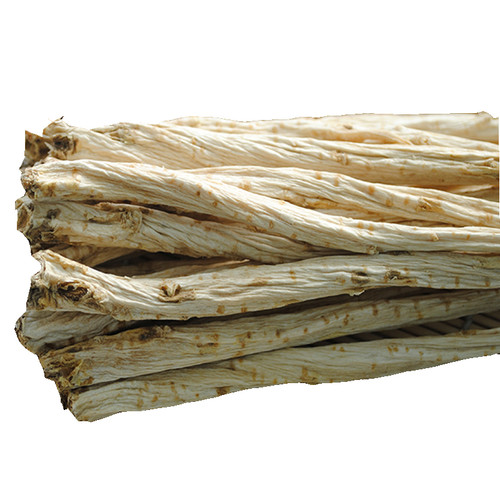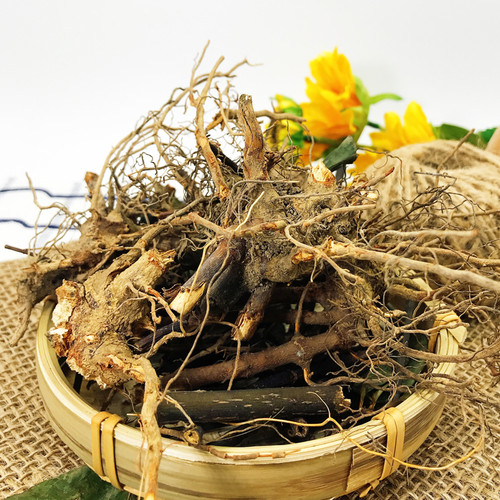Product Overview
Parts used: Dried root
TCM category: Warm/Acrid herbs that release the Exterior
TCM nature: Warm
TCM taste(s): PungentSweet
Meridian affinity: Bladder Spleen Liver
Scientific name: Saposhnikovia divaricata
Other names: Ledebouriella, Bangpung
Use of saposhnikovia roots (Fang Feng) in TCM
Please note that you should never self-prescribe TCM ingredients. A TCM ingredient is almost never eaten on its own but as part of a formula containing several ingredients that act together. Please consult a professional TCM practitionner, they will be best able to guide you.
Preparation: Remove residual stems, soak in water, cut in slices and dry.
Dosage: 3 - 9 grams
Main actions according to TCM*: Relieves the Exterior and disperses Cold. Relieves Wind-Damp-Cold painful obstruction. Disperses Wind.
Primary conditions or symptoms for which saposhnikovia roots may be prescribed by TCM doctors*: Headache Hives Arthralgia Rubella Common cold Rheumatoid arthritis
Contraindications*: Should not be used by those who are Yin Deficient or those with Blood Deficiency or by those with Heat signs associated with Yin Deficiency.
Common TCM formulas in which saposhnikovia roots are used*:
For rheumatism, muscular pains and spams or lumbago combine saposhnikovia roots with notopterygium roots (Qiang Huo), turmeric (Jiang Huang), milkvetch roots (Huang Qi), dong quai (Dang Gui), red peony roots (Chi Shao), fresh ginger (Sheng Jiang), liquorice (Gan Cao) and jujube dates (Da Zao).
For Cold Wind Dampness diseases associated with headaches and arthritic and rheumatic conditions, especially of the upper back and shoulders combine saposhnikovia roots with notopterygium roots (Qiang Huo) and turmeric (Jiang Huang).
Key TCM concepts behind saposhnikovia roots (Fang Feng)'s properties
In Traditional Chinese Medicine (TCM), saposhnikovia roots are plants that belong to the 'Warm/Acrid herbs that release the Exterior' category. Herbs that release the Exterior aim to to treat the early stages of diseases that affect the upper respiratory tract, the eyes, the ears, the nose, the throat or the skin. TCM believes that External diseases such as colds or allergies can only invade the body if the External environment overwhelms our Wei Qi (the TCM version of the immune system). In order to counteract this invasion Warm/Acrid herbs aim to induce sweating by increasing the flow of sweat to our capillary pores. The belief is that this will expel the disease from the body and stop it from invading further.
As suggested by its category saposhnikovia roots are plants that are Warm in nature. This means that saposhnikovia roots tend to help people who have too much "cold" in their body, although with less effect than a plant that would be Hot in nature. Balance between Yin and Yang is a key health concept in TCM. Those who have too much cold in their body are said to either have a Yin excess (because Yin is Cold in nature) or a Yang deficiency (Yang is Hot in Nature). Depending on your condition saposhnikovia roots can help restore a harmonious balance between Yin and Yang.
Saposhnikovia roots also taste Pungent and Sweet. The so-called "five elements" theory in Chinese Medicine states that the taste of TCM ingredients is a key determinant of their action in the body. Pungent ingredients like saposhnikovia roots tend to promote the circulations of Qi and body fluids. That's why for instance someone tends to sweat a lot when they eat spicy/pungent food. On the other hand Sweet ingredients tend to slow down acute reactions and detoxify the body. They also have a tonic effect because they replenish Qi and Blood.
The tastes of ingredients in TCM also determine what organs and meridians they target. As such saposhnikovia roots are thought to target the Bladder, the Spleen and the Liver. In TCM the impure water collected by the Kidneys that cannot be used by the body is sent to the Bladder for storage and excretion as urine. The Spleen on the other hand assists with digestion, blood coagulation and fluid metabolism in the body. The Liver is often referred as the body's "general" because it is in charge of regulating the movements of Qi and body fluids. It also takes a leading role in balancing our emotions.









